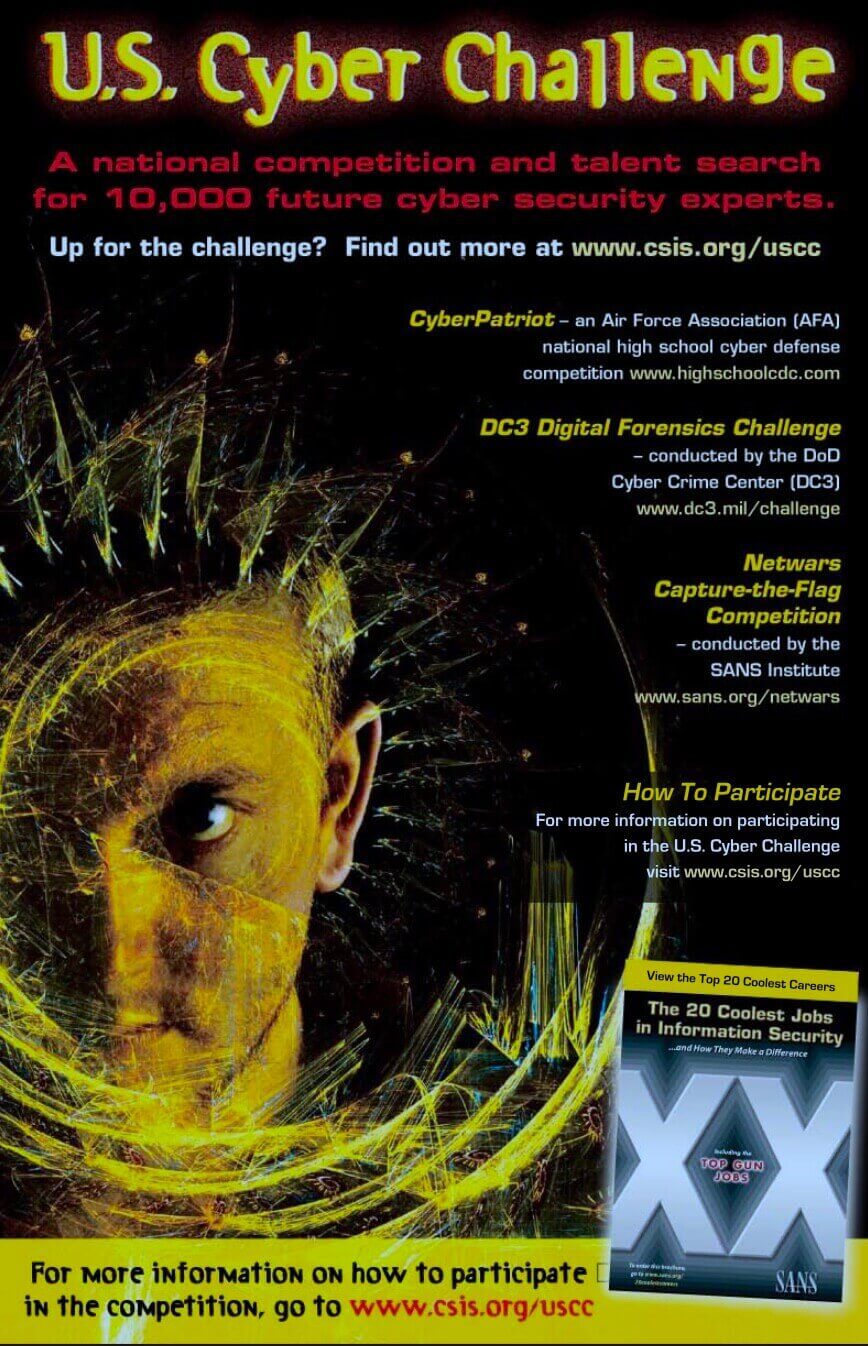
Just as the nations with the most elite fighter pilots prevailed in World War II, finding and training enough people with elite cyber talent will be an existential challenge in the next war as well as in the ongoing cyber cold war. And the shortage of these cyber defenders and hunters transcends the military and intelligence community – the availability of on-site defenders is also the most important determinant of whether critical infrastructure organizations can shield their systems from damage caused by cyber intruders.
The need for the United States to develop a much larger pipeline of elite cyber talent is not new, though today it is more critical than ever. The CIO Institute launched the U.S. Cyber Challenge in 2009 with the mission to significantly reduce the shortage in the elite cyber workforce by identifying, attracting, recruiting, and placing the next generation of cybersecurity professionals. The goal was to find 10,000 of America’s best and brightest to fill the ranks of cybersecurity jobs where their skills could be of the greatest value to the nation (https://www.uscyberchallenge.org/about).
Tellingly, at the launch of the challenge in July 2009, the program on Capitol Hill chaired by Jim Lewis of the Center for Strategic and International Studies (CSIS) was entitled “U.S. Cyber Challenge – Can We Catch Up?” The prestige of the speakers and those in attendance at the event reflected the gravity of the situation even then and the hope that the U. S. Cyber Challenge offered a promising step to address it. Speakers included Dick Schaeffer, Director, Information Assurance, National Security Agency; Steve Shirley, Executive Director, Defense Cyber Crime Center (DC3) and Founding Director of the Defense Industrial Base Cyber Program of the Department of Defense; Sandy Schlitt, Vice Chairman of the Board for Aerospace Education, Air Force Association representing CyberPatriot; Pete Fonash, Acting Director of the National Cybersecurity Division of the U.S. Department of Homeland Security; and Alan Paller of the SANS Institute. Two members of Congress, 7 Senate and House committee staff directors, and more than 80 other congressional staffers attended.
Since that event more than a decade ago, the need for elite cyber talent has only intensified. The original target of 10,000 professionals now seems almost quaint – today it is far below the number of highly skilled defenders and hunters needed to protect the United States in cyberspace. Fortunately, the tools required to find and develop tens of thousands of high-aptitude candidates have emerged and been validated in the United Kingdom and elsewhere. As a result, the U.S. Cyber Challenge will undergo a renaissance during 2021 and 2022 with the aim of training a larger number of elite cybersecurity professionals and providing substantial scholarships for America’s most talented young people.